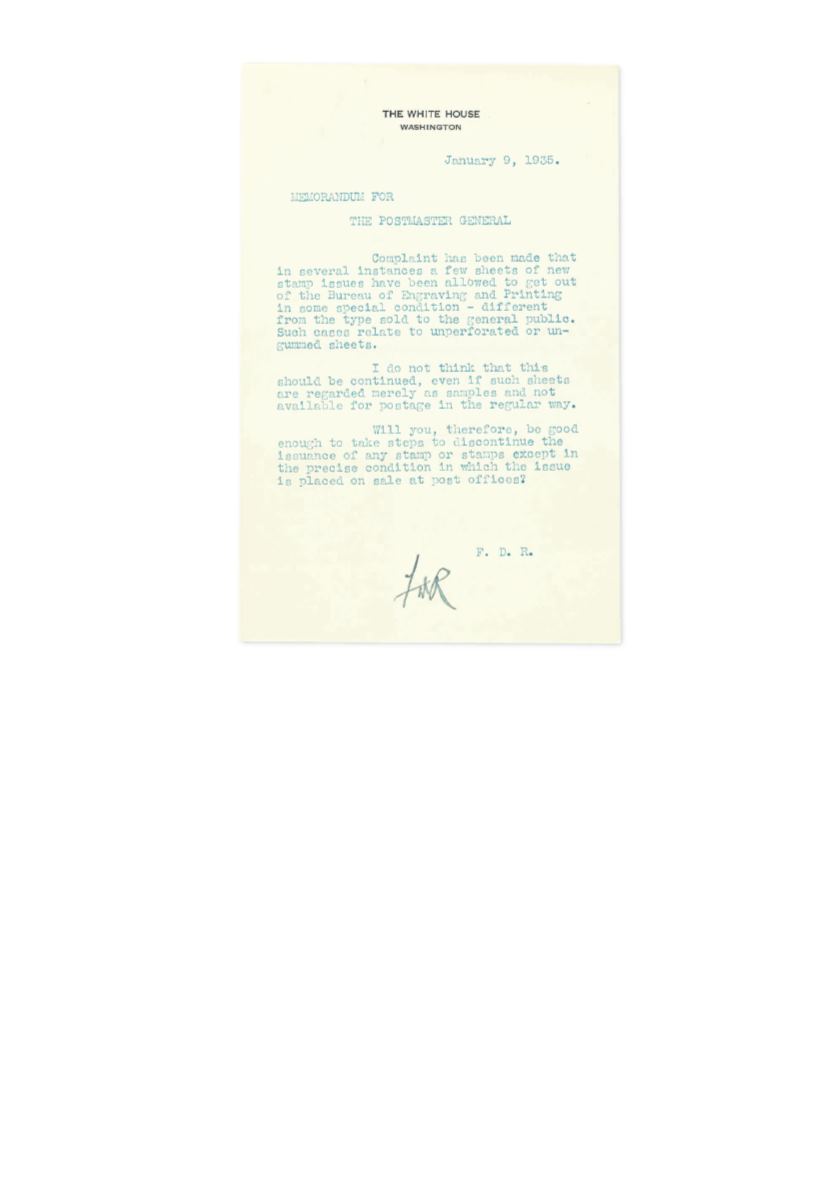

RESPONDINGTO FARLEY’S UNPERFORATED STAMP SHEETS
181
●
ROOSEVELT, FRANKLIN D. Two items: Typed Letter Signed, “FDR,” as
President, to the Postmaster General * Sheet of 100 perforated stamps Signed, “Franklin D.
Roosevelt.” The letter, a memorandum instructing Postmaster General James A. Farley to
ensure that no stamp sheets are released that are in any way different from those offered at
post offices. 1 page, 8vo,White House stationery; folds, faint paper clip stain at upper edge.
The stamps, each a perforate
1
/
2
-cent stamp showing the profile of Benjamin Franklin in
orange, gummed and with margin bearing serial number 21887. Additionally signed by
Secretary of the Treasury Henry Morgenthau, Jr. Both signed vertically in the sheet’s right
margin. 10
1
/
4
x9 inches; faint even toning. (TFC)
Washington, 9 January 1935; Np, circa 1934?
[2,000/3,000]
“
Complaint has been made that in several instances a few sheets of new stamp issues have been
allowed to get out of the Bureau of Engraving and Printing in some special condition—different from the
type sold to the general public. Such cases relate to unperforated or ungummed sheets. . . .
“
Will you . . . take steps to discontinue the issuance of any stamp or stamps except in the precise con-
dition in which the issue is placed on sale at post offices?”
On at least twenty occasions, Postmaster General Farley obtained two or more freshly printed sheets of
stamps, ungummed and unperforated, to keep or distribute to friends as souvenirs. He often presented
one of the sheets to FDR, whom he knew to be philatelically inclined; often, one or both men signed in
the margin. In 1935, the philatelic community objected to being denied access to the rare stamp sheets,
prompting the present letter. In March of that year, Farley began reprinting the twenty known stamp
sheets, leaving them ungummed and unperforated, and making them available to the public; these are
known among stamp collectors as “Farley’s Follies.”









